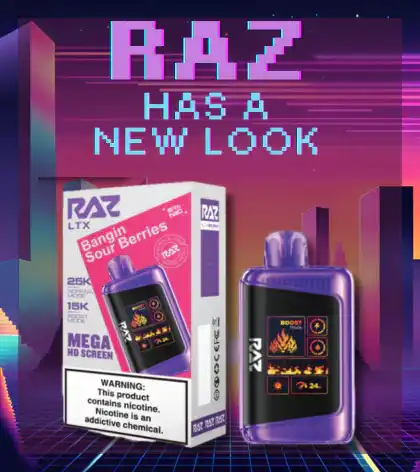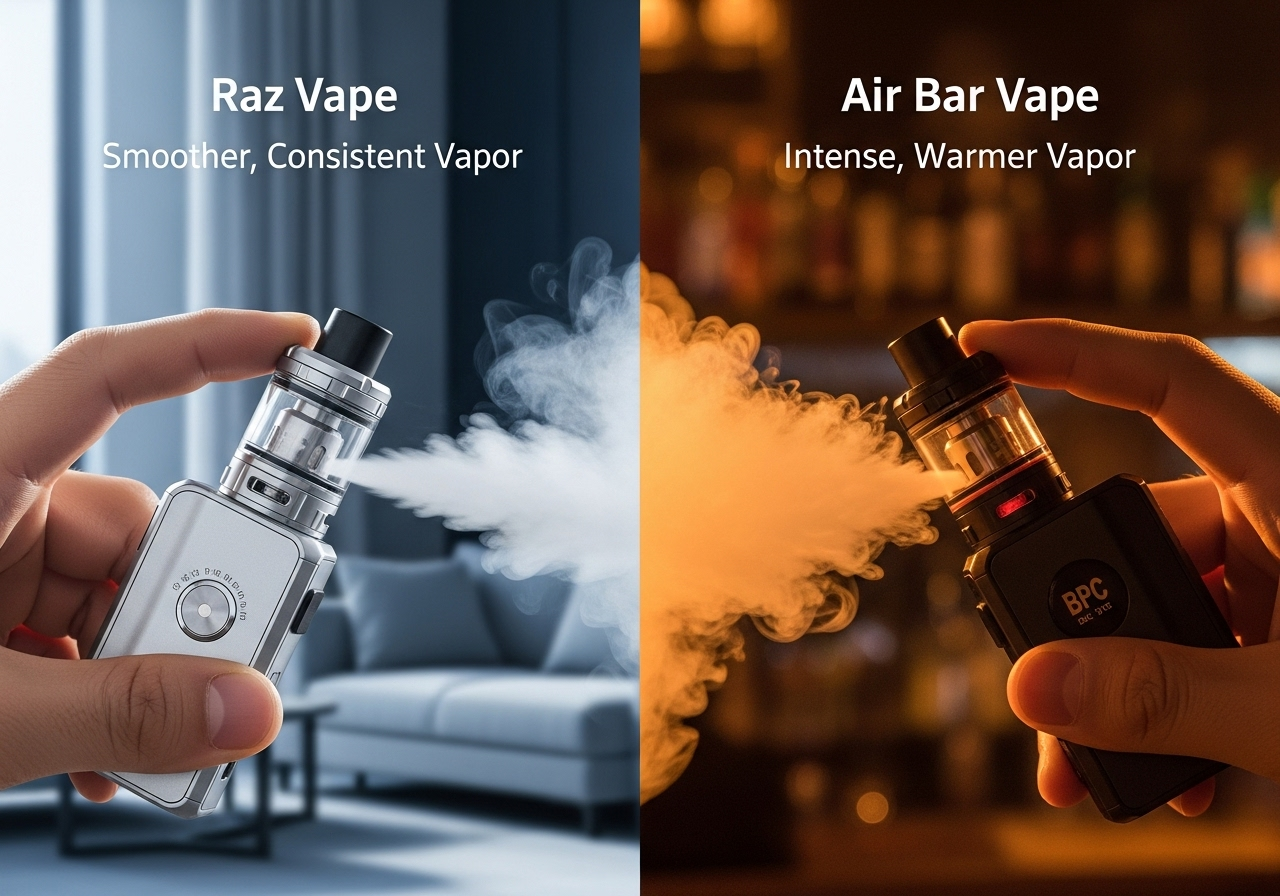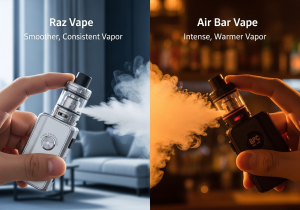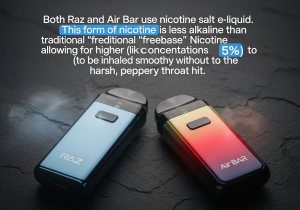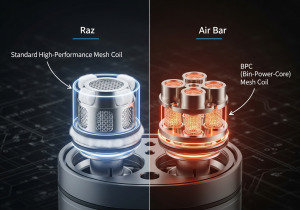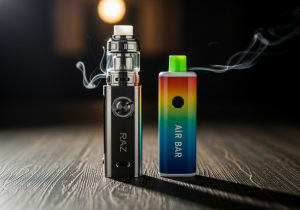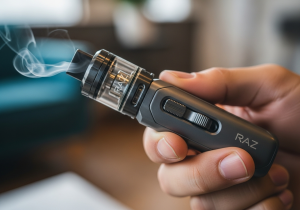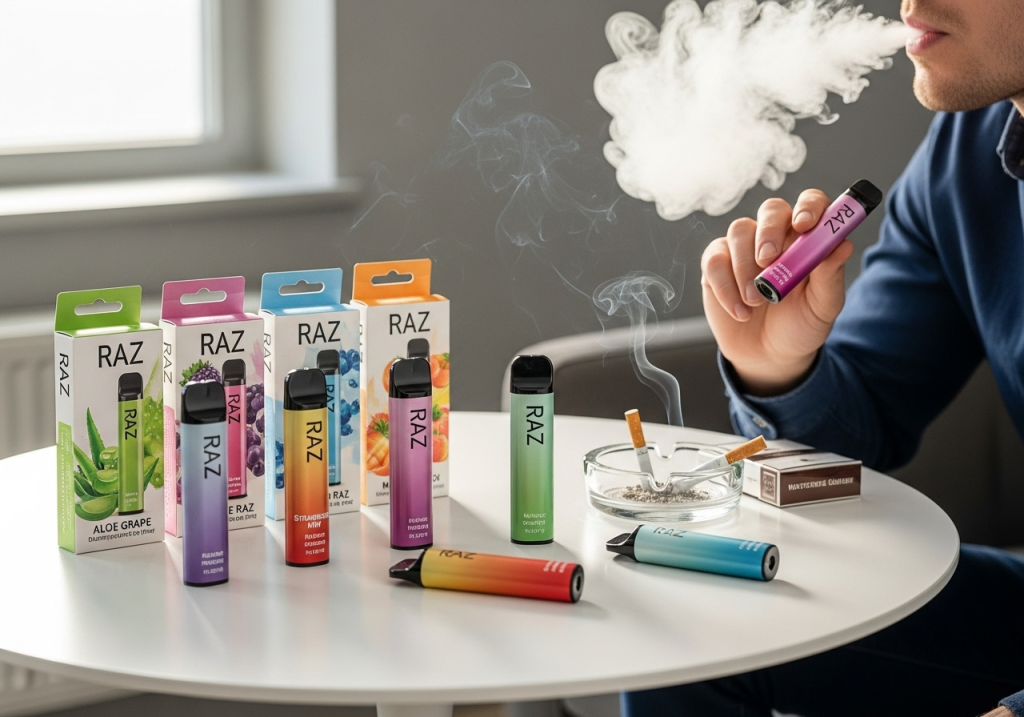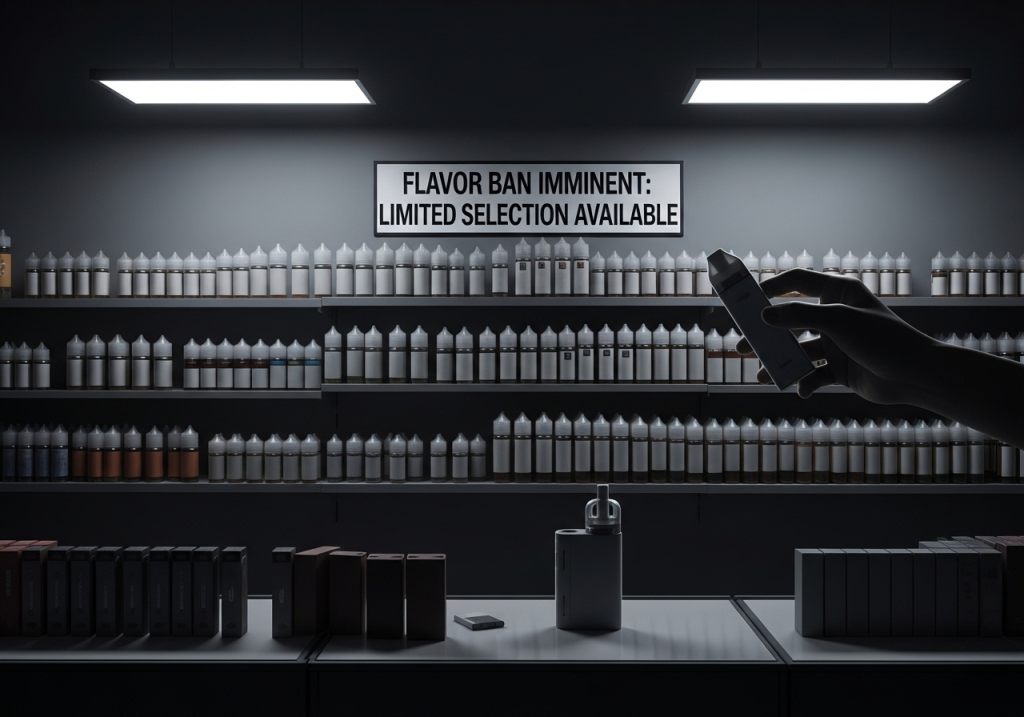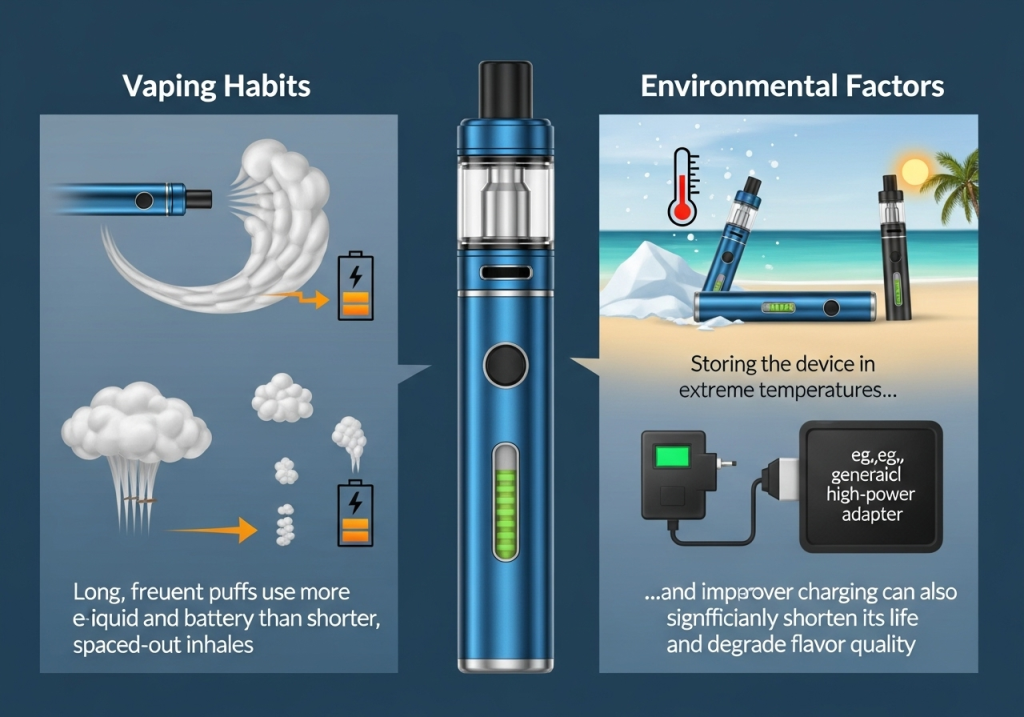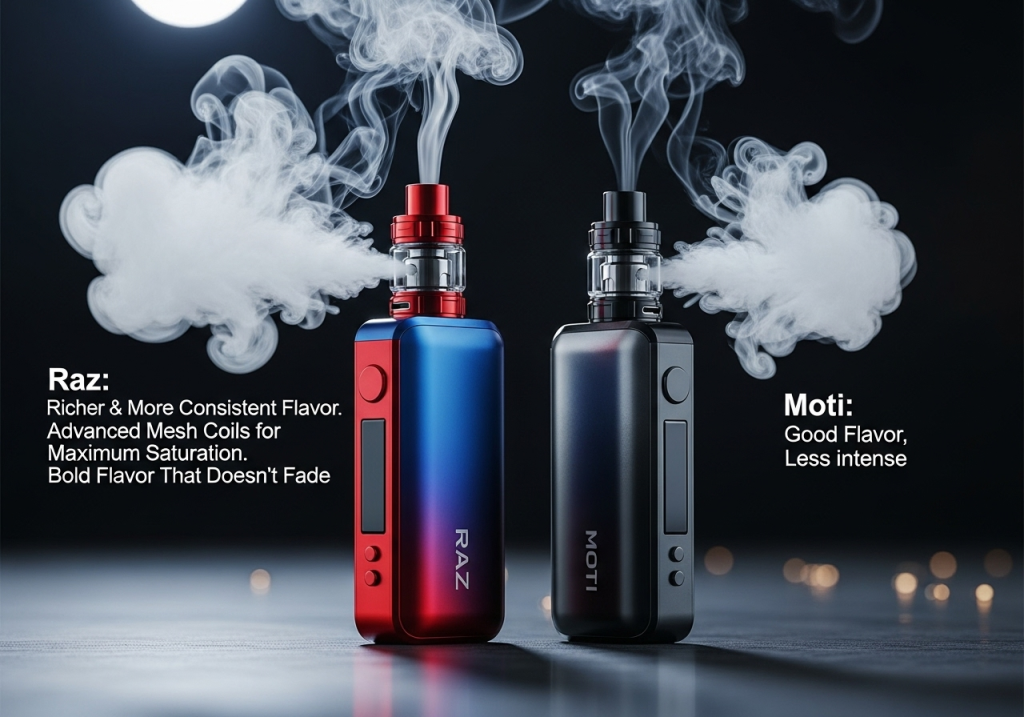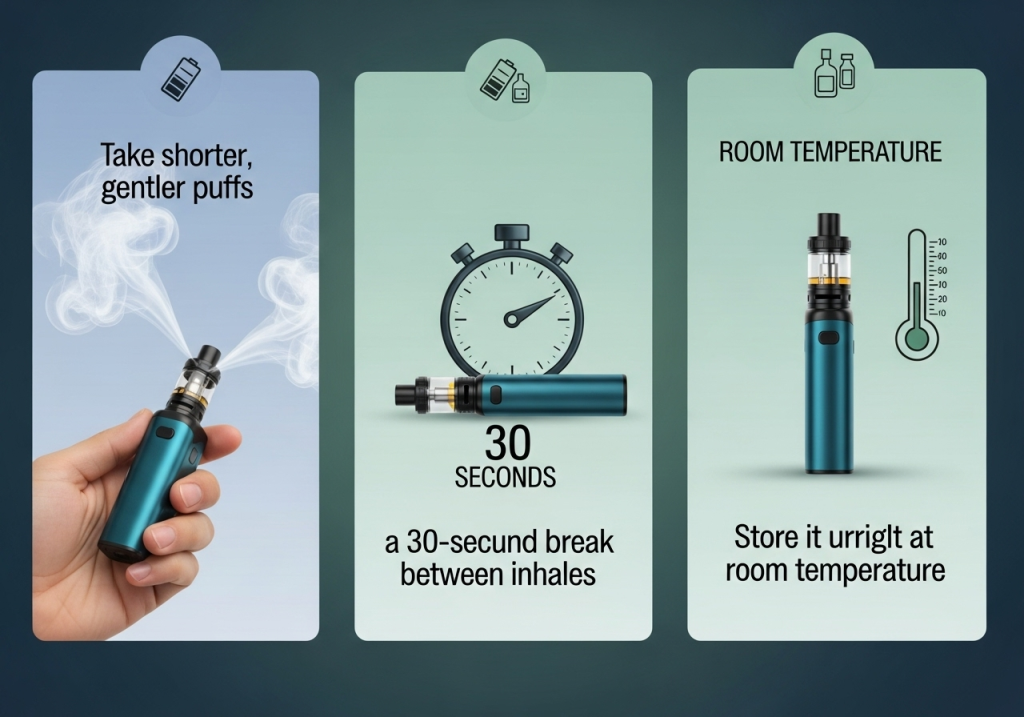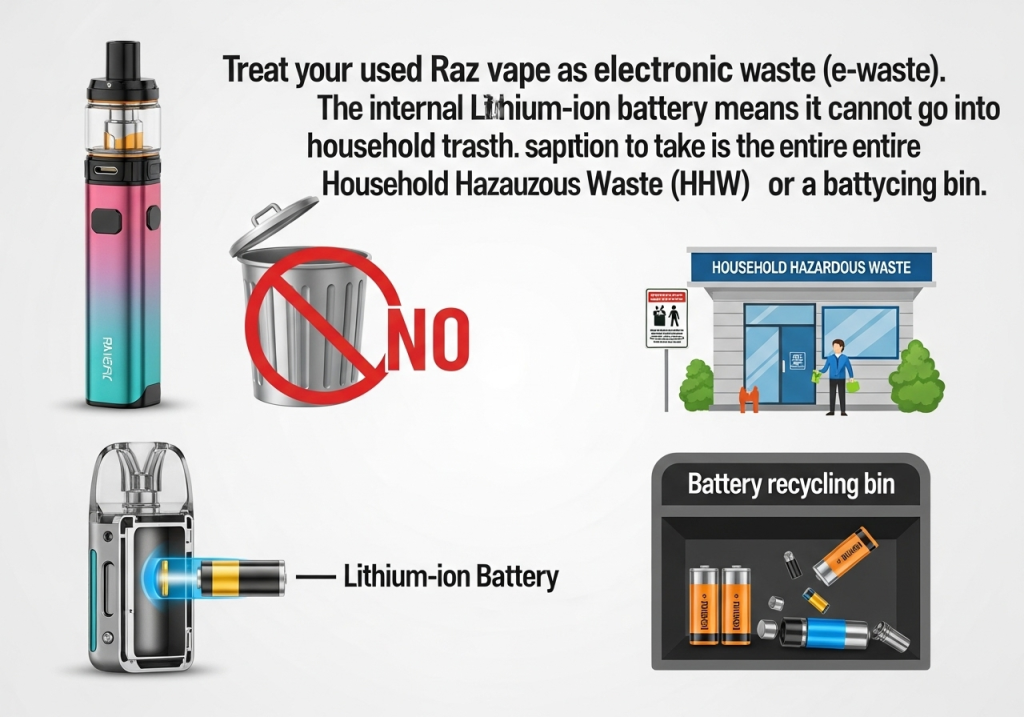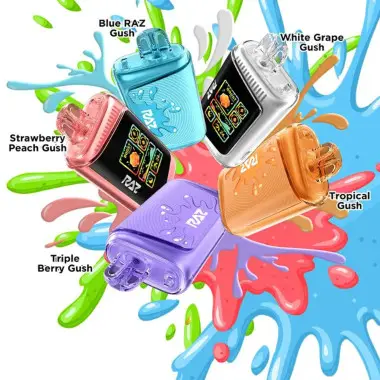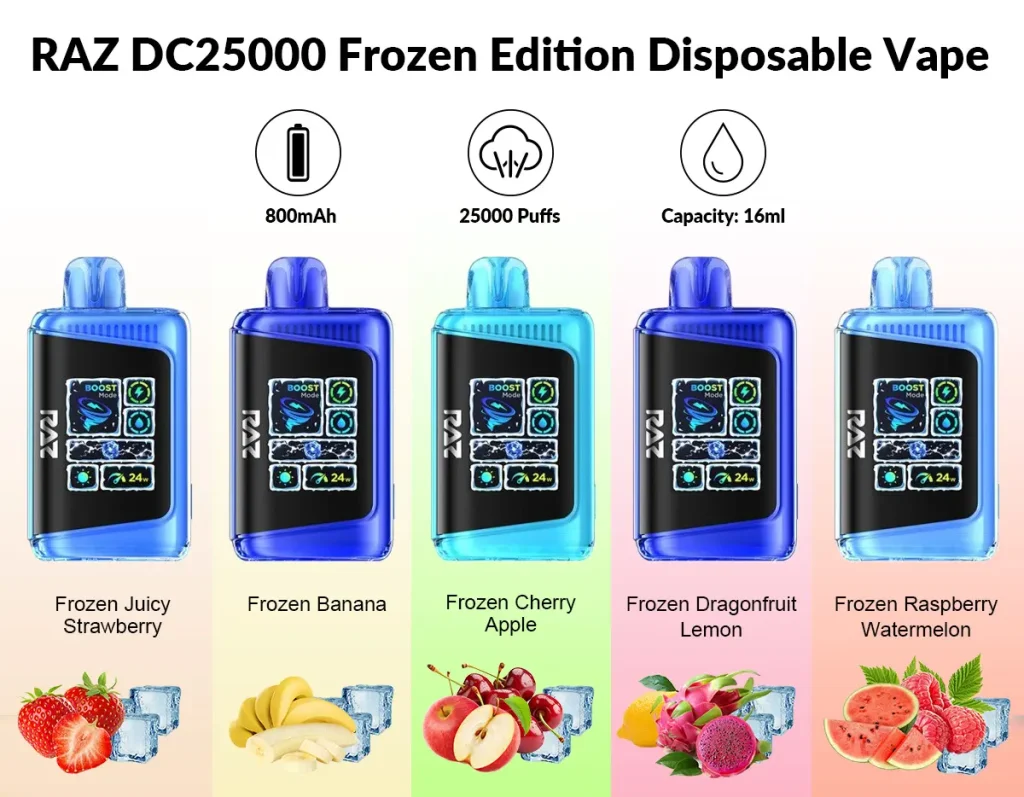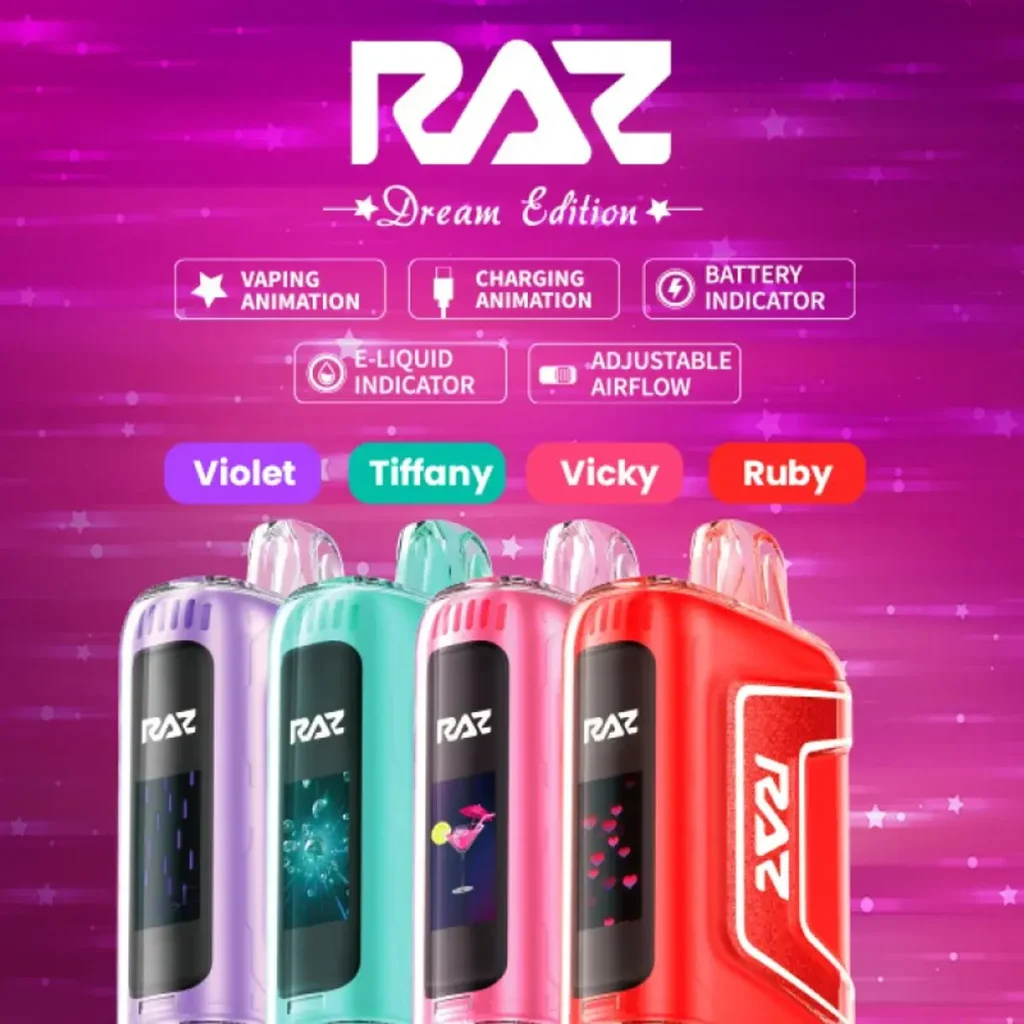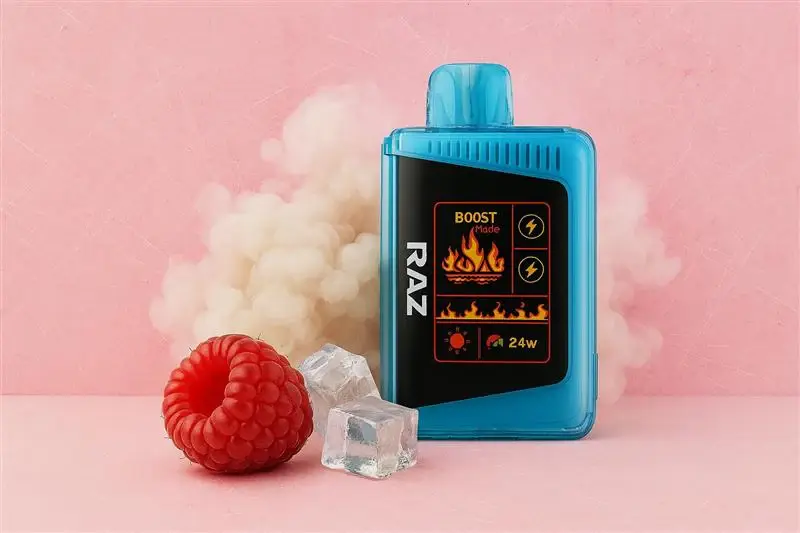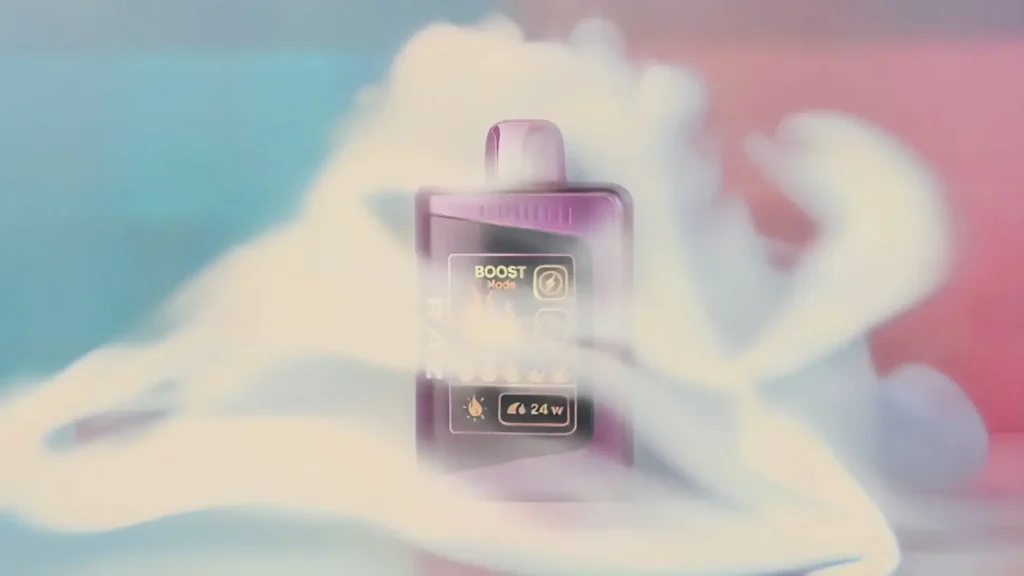You take a puff from a new vape, expecting a smooth experience, but instead, you get a harsh, cough-inducing hit. You want a satisfying vape, not a painful one.
Both brands use nicotine salts for a smoother experience, but Raz Vapes are often considered to have a slightly smoother and more consistent delivery due to their airflow control and standard mesh coil, while Air Bar's BPC coil can deliver a more intense, warmer vapor.
This is the kind of technical detail my U.S. buyer, Matt, is always asking about. He'll say, "Eric, user feedback is key. We're hearing that some vapes feel 'spitty' or 'harsh.' How do we ensure our products deliver that smooth hit customers expect?" It's a crucial question. The "feel" of the nicotine is just as important as the flavor. As the manufacturer, I can tell you that this smoothness comes down to two key things: the type of nicotine used and the hardware that vaporizes it. Let's compare Raz and Air Bar on both fronts.
What Type of Nicotine Do Raz and Air Bar Use?
You hear the term "nicotine salt" but have no idea what it means compared to the nicotine in cigarettes. You wonder if this is why some vapes feel so different.
Both Raz and Air Bar use nicotine salt e-liquid. This form of nicotine is less alkaline than traditional "freebase" nicotine, allowing for higher concentrations (like 5%) to be inhaled smoothly without the harsh, peppery throat hit.
Diving Deeper: The Science of Smoothness
For years, the nicotine used in vape juice was "freebase" nicotine. This is the purest form, but it becomes very harsh at high concentrations. A 5% freebase nicotine vape would be almost impossible for most people to inhale. This is where nicotine salts changed the game.
- Freebase Nicotine: This is the original standard. It's harsh on the throat, especially above 1.8% (18mg/mL). It's better suited for low-nicotine, high-power "mod" vaping.
- Nicotine Salt: This is nicotine bonded with a weak acid (like benzoic acid). This simple chemical change lowers the pH, making the vapor feel much smoother on the throat. It allows a 5% (50mg/mL) concentration to feel as smooth as a 0.6% (6mg/mL) freebase e-liquid. It also absorbs into the bloodstream faster, more closely mimicking the sensation of a cigarette.
| Nicotine Type | Throat Hit (at 5%) | Absorption Speed | Best For |
|---|---|---|---|
| Freebase | Extremely Harsh | Slower | Low-nicotine, high-vapor cloud chasing |
| Nicotine Salt | Smooth | Fast | High-nicotine, low-power disposables (Raz, Air Bar) |
Since both Raz and Air Bar use nicotine salts, they start on a level playing field. The difference in their delivery, therefore, must come from their internal technology.
How Does Coil Technology Affect the Vaping Experience?
You see "Mesh Coil" or "BPC Coil" written on the packaging and dismiss it as marketing. You assume it doesn't really change how the vape feels or performs.
Coil technology is critical. Raz uses a standard high-performance mesh coil for consistent heating, while Air Bar heavily markets its BPC (Bin-Power-Core) Mesh Coil, which aims to deliver more intense flavor and vapor, sometimes resulting in a warmer hit.
Diving Deeper: The Engine of the Vape
The coil is the heart of any vape. It's the wire mesh that heats the e-liquid into vapor. How it heats—how quickly and how evenly—directly impacts the smoothness and flavor of every puff.
- Raz's Mesh Coil: Raz vapes, like the TN9000, use a high-quality mesh coil. The "mesh" design provides a large, even surface area to heat the liquid. This prevents "hot spots" which can scorch the liquid and create a harsh, burnt taste. The focus of this design is consistency. Every puff should feel and taste the same from the first to the last, providing a reliably smooth and flavorful experience. The vapor is typically dense but not overly hot.
- Air Bar's BPC Mesh Coil: Air Bar introduced the BPC coil as a key innovation. According to their materials, it's designed for maximum flavor delivery and vapor production. This coil often heats up very quickly and can run slightly hotter. For some users, this creates a richer, more powerful puff. For others, this extra heat can make the vapor feel a bit harsher or more intense, especially on longer draws. It's a trade-off between consistency and intensity.
The choice here comes down to personal preference. Raz prioritizes a dependably smooth hit, while Air Bar pushes for a more powerful one.
Which Brand Gives a Better Throat Hit?
You're a former smoker looking for that familiar "kick" in the back of your throat. You want a vape that satisfies this craving without being painfully harsh or irritating.
For a classic cigarette-like throat hit, Raz often has the edge due to its adjustable airflow. Closing the airflow creates a tighter, more concentrated puff that mimics smoking. Air Bar provides a strong, consistent hit but lacks this customization.
Diving Deeper: Defining the Perfect Hit
"Throat hit" is that physical sensation you feel when you inhale nicotine. It's a critical part of the experience for many former smokers. Too little, and the vape feels weak and unsatisfying. Too much, and it's a harsh, unpleasant cough-fest. Smoothness is the balance between these two extremes.
- Raz's Advantage (Adjustable Airflow): Many Raz models, including the popular TN9000, feature an adjustable airflow slider. This is a massive feature for customizing your throat hit.
- Open Airflow: Creates a looser, airier draw with a milder throat hit. The vapor is cooler and feels very smooth.
- Closed Airflow: Creates a tight, restricted "mouth-to-lung" (MTL) draw. This concentrates the vapor and provides a much more pronounced, satisfying throat hit that closely resembles a cigarette. This customization allows you to find your perfect balance.
- Air Bar's Approach: Most Air Bar models have a fixed airflow. It is engineered to provide a balanced MTL draw that works well for the average user. It delivers a solid throat hit, but it's a "one-size-fits-all" experience. You get what the designers intended, with no ability to make it tighter or looser to your personal liking.
Because Raz allows you to control the draw, it gives you the power to define what a "smooth" or "strong" hit feels like for you.
Is One Better for Heavy Smokers Switching to Vaping?
You've tried vaping before, but it didn't stick because it just didn't feel like a cigarette. You're looking for the brand that best replicates that experience to help you switch for good.
For heavy smokers just beginning to transition, the Raz vape is often the better choice. Its adjustable airflow allows a user to perfectly replicate the tight draw of a cigarette, making the switch feel more natural and satisfying.
Diving Deeper: Bridging the Gap from Smoking to Vaping
Successfully switching from smoking to vaping depends heavily on how well the vape can replace the physical rituals and sensations of a cigarette. Here, small details make a big difference.
The main challenge for a new vaper is the difference in how you draw.
- Cigarette Draw: Short, sharp, tight puffs into the mouth, then inhaled (Mouth-to-Lung).
- Default Vape Draw: Often longer, slower, looser draws directly into the lungs (Direct-to-Lung), which can feel unnatural and cause coughing for a smoker.
This is where the Raz vape excels for a beginner. By closing the airflow down, a heavy smoker can use the exact same short, tight MTL puff they are accustomed to. This makes the initial transition period much easier. They get the familiar throat hit and draw sensation, powered by smooth nicotine salts.
Air Bar is an excellent device, but its fixed airflow might feel too airy for a smoker fresh off of pack-a-day. It might require them to change their inhalation style, adding another hurdle to their attempt to quit smoking. For this reason, the customizability of the Raz gives it a distinct advantage for this specific type of user.
Conclusion
While both brands deliver smooth nicotine with salt e-liquids, Raz's adjustable airflow gives it a slight edge. It offers a more customizable experience, allowing you to fine-tune the perfect, smoothest hit.

